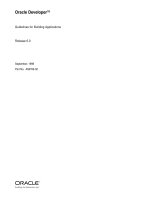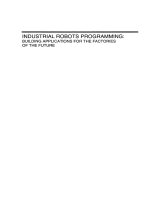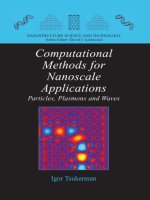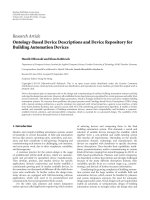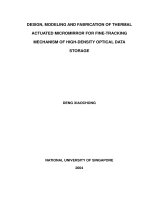ISO 29471:2008 Thermal insulating products for building applications — Determination of dimensional stability under constant normal laboratory conditions (23 degrees C50 % relative humidity)
Bạn đang xem bản rút gọn của tài liệu. Xem và tải ngay bản đầy đủ của tài liệu tại đây (188.91 KB, 14 trang )
INTERNATIONAL ISO
STANDARD 29471
First edition
2008-11-01
Thermal insulating products for building
applications — Determination of
dimensional stability under constant
normal laboratory conditions
(23 °C/50 % relative humidity)
Produits isolants thermiques destinés aux applications du bâtiment —
Détermination de la stabilité dimensionnelle dans des conditions de
laboratoire constantes et normales (23 °C/50 % d'humidité relative)
Reference number
ISO 29471:2008(E)
© ISO 2008
ISO 29471:2008(E)
PDF disclaimer
This PDF file may contain embedded typefaces. In accordance with Adobe's licensing policy, this file may be printed or viewed but
shall not be edited unless the typefaces which are embedded are licensed to and installed on the computer performing the editing. In
downloading this file, parties accept therein the responsibility of not infringing Adobe's licensing policy. The ISO Central Secretariat
accepts no liability in this area.
Adobe is a trademark of Adobe Systems Incorporated.
Details of the software products used to create this PDF file can be found in the General Info relative to the file; the PDF-creation
parameters were optimized for printing. Every care has been taken to ensure that the file is suitable for use by ISO member bodies. In
the unlikely event that a problem relating to it is found, please inform the Central Secretariat at the address given below.
COPYRIGHT PROTECTED DOCUMENT
© ISO 2008
All rights reserved. Unless otherwise specified, no part of this publication may be reproduced or utilized in any form or by any means,
electronic or mechanical, including photocopying and microfilm, without permission in writing from either ISO at the address below or
ISO's member body in the country of the requester.
ISO copyright office
Case postale 56 • CH-1211 Geneva 20
Tel. + 41 22 749 01 11
Fax + 41 22 749 09 47
Web www.iso.org
Published in Switzerland
ii © ISO 2008 – All rights reserved
ISO 29471:2008(E)
Contents Page
Foreword............................................................................................................................................................ iv
Introduction ........................................................................................................................................................ v
1 Scope ..................................................................................................................................................... 1
2 Normative references ........................................................................................................................... 1
3 Terms and definitions........................................................................................................................... 1
4 Principle ................................................................................................................................................. 2
5 Apparatus .............................................................................................................................................. 2
6 Test specimens ..................................................................................................................................... 4
7 Procedure .............................................................................................................................................. 5
8 Calculation and expression of results................................................................................................ 6
9 Accuracy of measurement ................................................................................................................... 6
10 Test report ............................................................................................................................................. 7
© ISO 2008 – All rights reserved iii
ISO 29471:2008(E)
Foreword
ISO (the International Organization for Standardization) is a worldwide federation of national standards bodies
(ISO member bodies). The work of preparing International Standards is normally carried out through ISO
technical committees. Each member body interested in a subject for which a technical committee has been
established has the right to be represented on that committee. International organizations, governmental and
non-governmental, in liaison with ISO, also take part in the work. ISO collaborates closely with the
International Electrotechnical Commission (IEC) on all matters of electrotechnical standardization.
International Standards are drafted in accordance with the rules given in the ISO/IEC Directives, Part 2.
The main task of technical committees is to prepare International Standards. Draft International Standards
adopted by the technical committees are circulated to the member bodies for voting. Publication as an
International Standard requires approval by at least 75 % of the member bodies casting a vote.
Attention is drawn to the possibility that some of the elements of this document may be the subject of patent
rights. ISO shall not be held responsible for identifying any or all such patent rights.
ISO 29471 was prepared by Technical Committee ISO/TC 163, Thermal performance and energy use in the
built environment, Subcommittee SC 1, Test and measurement methods.
iv © ISO 2008 – All rights reserved
ISO 29471:2008(E)
Introduction
This International Standard comprises the original EN 1603:1996 and EN 1603:1996/AC:1997 prepared by
Technical Committee CEN/TC 88, Thermal insulating materials and products, which have been amended by
ISO/TC 163/SC 1 with reference to conditioning and testing conditions in tropical countries.
This International Standard is one of a series of documents specifying test methods, based on existing
European Standards, that are being adopted by ISO. This “package” of standards includes the following group
of interrelated documents.
International Standard Respective EN
standard
ISO 29465, Thermal insulating products for building applications — Determination of length EN 822
and width
ISO 29466, Thermal insulating products for building applications — Determination of EN 823
thickness
ISO 29467, Thermal insulating products for building applications — Determination of EN 824
squareness
ISO 29468, Thermal insulating products for building applications — Determination of flatness EN 825
ISO 29469, Thermal insulating products for building applications — Determination of EN 826
compression behaviour
ISO 29470, Thermal insulating products for building applications — Determination of the EN 1602
apparent density
ISO 29471, Thermal insulating products for building applications — Determination of EN 1603
dimensional stability under constant normal laboratory conditions (23°C/50 % relative
humidity)
ISO 29472, Thermal insulating products for building applications — Determination of EN 1604
dimensional stability under specified temperature and humidity conditions
ISO 29764, Thermal insulating products for building applications — Determination of EN 1605
deformation under specified compressive load and temperature conditions
ISO 29765, Thermal insulating products for building applications — Determination of tensile EN 1607
strength perpendicular to faces
ISO 29766, Thermal insulating products for building applications — Determination of tensile EN 1608
strength parallel to faces
ISO 29767, Thermal insulating products for building applications — Determination of EN 1609
short-term water absorption by partial immersion
© ISO 2008 – All rights reserved v
ISO 29471:2008(E)
ISO 29768, Thermal insulating products for building applications — Determination of linear EN 12085
dimensions of test specimens EN 12430
EN 12431
ISO 29769, Thermal insulating products for building applications — Determination of EN 13820
behaviour under point load EN 13497
EN 13494
ISO 29770, Thermal insulating products for building applications — Determination of EN 13496
thickness for floating-floor insulating products
ISO 29771, Thermal insulating materials for building applications — Determination of organic
content
ISO 29803, Thermal insulation products for building applications — Determination of the
resistance to impact of external thermal insulation composite systems (ETICS)
ISO 29804, Thermal insulation products for building applications — Determination of the
tensile bond strength of the adhesive and of the base coat to the thermal insulation material
ISO 29805, Thermal insulation products for building applications — Determination of the
mechanical properties of glass fibre meshes
vi © ISO 2008 – All rights reserved
INTERNATIONAL STANDARD ISO 29471:2008(E)
Thermal insulating products for building applications —
Determination of dimensional stability under constant normal
laboratory conditions (23 °C/50 % relative humidity)
1 Scope
This International Standard specifies the equipment and procedures to evaluate irreversible dimensional
changes of test specimens and full-size products with time under constant normal laboratory conditions. It is
applicable to thermal insulating products.
2 Normative references
The following referenced documents are indispensable for the application of this document. For dated
references, only the edition cited applies. For undated references, the latest edition of the referenced
document (including any amendments) applies.
ISO 29465, Thermal insulating products for building applications — Determination of length and width
ISO 29468, Thermal insulating products for building applications — Determination of flatness
ISO 5725-2, Accuracy (trueness and precision) of measurement methods and results — Part 2: Basic method
for the determination of repeatability and reproducibility of a standard measurement method
3 Terms and definitions
For the purposes of this document, the following terms and definitions apply.
3.1
length
l
long linear dimension of the major surface of the specimen parallel to the longer linear dimension of the
original product
3.2
width
b
short linear dimension of the major surface of the specimen, measured at right angles to the length
3.3
deviation from flatness
S
the maximum distance between the product, placed on a flat surface with the convex side uppermost, and the
flat surface
3.4
normal laboratory conditions
(23 ± 2) °C and (50 ± 5) % relative humidity
© ISO 2008 – All rights reserved 1
ISO 29471:2008(E)
4 Principle
Measure length, width and deviation from flatness of the specimens at several time intervals under normal
laboratory conditions until relative stability has been achieved.
Dimensional stability is determined using one or more of the following methods:
⎯ method A: Determination of linear dimensions of full size products;
⎯ method B: Determination of linear dimensions of products using specimens with dimensions smaller than
those of the full-size products;
⎯ method C: Determination of deviation from flatness of full-size products.
5 Apparatus
5.1 (for method A) Measuring equipment, as defined in ISO 29465.
5.2 (for method B) Frame, fixed on a flat reference surface with a dial gauge of 0,01 mm accuracy or any
device (optical, electrical etc.) that has an accuracy of 0,1 mm/m (see examples in Figures 1 and 2) plus either
the equipment described in 5.3 (for method B1) or the equipment described in 5.4 (for method B2).
5.3 (for method B1) Metal plates, at least 20 mm in diameter (see Figure 1). The actual diameter is chosen
so that the pressure exerted by the dial gauge is less than 2 kPa.
5.4 (for method B2) Metal wire (see Figure 2).
5.5 (for method C) Measuring equipment, as defined in ISO 29468.
Any test equipment that provides the same result to at least the same accuracy may be used.
2 © ISO 2008 – All rights reserved
ISO 29471:2008(E)
Dimensions in millimetres
Key
1 flat reference surface
2 metal plate
3 dial gauge
4 metal bead
Figure 1 — Example of suitable equipment for method B1
© ISO 2008 – All rights reserved 3
ISO 29471:2008(E)
Dimensions in millimetres
Key
1 optical or electrical device
2 rule
3 metal wire
Figure 2 — Example of suitable equipment for method B2
6 Test specimens
6.1 Dimensions of test specimens
The thickness of the specimens shall be equal to the original product thickness.
⎯ For method A, the specimen shall be the full-size product.
⎯ For method B1, 500 mm × 500 mm or, if less than 500 mm × 500 mm, as large as possible.
In every case, it shall be greater than 250 mm × 250 mm.
⎯ For method B2, 250 mm × 250 mm.
⎯ For method C, the specimen shall be the full-size product.
6.2 Number of test specimens
When testing full-size products, the number of specimens shall be as specified in the relevant product
standard. If measurements are made on specimens taken from a full-size product, at least three specimens
shall be tested. In the absence of a product standard or any other international or European technical
specification, the number of specimens may be agreed between parties.
4 © ISO 2008 – All rights reserved
ISO 29471:2008(E)
6.3 Preparation of test specimens
The specimens shall be cut by methods that do not change the structure from that of the original product.
If specimens are not the full-size products, the length and width directions shall be marked on them.
The method of selection of the specimens shall be as specified in the relevant product standard. In the
absence of a product standard or any other international or European technical specification, the method of
selection may be agreed between parties.
6.4 Conditioning of test specimens
The specimens shall be conditioned for at least 24 h at (23 ± 2) °C and (50 ± 5) % relative humidity.
In tropical countries, different conditioning and testing conditions can be relevant. In this case, the conditions
shall be 27 °C and 65 % RH and be stated clearly in the test report.
7 Procedure
7.1 Test conditions
Testing shall be carried out at (23 ± 2) °C and (50 ± 5) % relative humidity.
The specimens shall be conditioned, either vertically or horizontally, with their major faces exposed to the test
atmosphere (e.g. supported by wire mesh away from the chamber walls).
In tropical countries, different conditioning and testing conditions can be relevant. In this case, the conditions
shall be 27 °C and 65 % RH and be stated clearly in the test report.
7.2 Test procedure
7.2.1 General
Measure dimensional stability using method A, B, or C. The choice shall be as specified in the relevant
product standard. In the absence of a product standard or any other international or European technical
specification, the method used may be agreed between parties.
Measure the length, the width and the deviation from flatness at the start of the test (l0, b0, S0, respectively)
and thereafter at time intervals of 28 days (lt, bt, St, respectively), with a minimum total test duration of 28 days.
If a more accurate deformation curve is required, measurements may additionally be performed at 1 day,
3 days, 7 days, and 14 days.
Continue measurements until the change in dimensions between the last two measurements is less then 10 %
of the total change permitted. The total change permitted, ∆ε, is normally specified in the relevant product
standard. In the absence of such a specification, ∆ε, may be agreed between parties.
The accuracy of the measuring equipment shall be equal to at least ∆ε/10.
⎯ Method A shall be used if ∆ε is 1 % or greater.
⎯ Method B shall be used if ∆ε is less then 1 % but greater than 0,1 %.
⎯ Method C requires an accuracy of 0,5 mm.
© ISO 2008 – All rights reserved 5
ISO 29471:2008(E)
7.2.2 Method A
Measure the length and width of the full-size product in accordance with ISO 29465.
7.2.3 Method B1
Glue the metal plates to the edges of the specimen, as shown in Figure 1. Measure the dimensions and
record to the nearest 0,01 mm.
7.2.4 Method B2
Glue the metal wires to the major faces of the specimen, as shown in Figure 2. Measure the dimensions and
record to the nearest 0,005 mm.
7.2.5 Method C
Measure the deviation from flatness in accordance with ISO 29468.
8 Calculation and expression of results
Calculate the dimensional changes, ∆εl and ∆εb, expressed as percentages, and ∆εS, expressed in millimetres
per metre, from the individual measurements, using Equations (1) to (3), respectively:
∆ε l = 100 × ∆l (1)
l0
∆ε b = 100 × ∆b (2)
b0
∆ε S = 10 3 × ∆S or ∆ε S = 10 3 × ∆S (3)
l0 b0
where
∆l, ∆b are the measured overall changes in length and width, expressed in millimetres;
∆S is the measured overall change in flatness, expressed in millimetres;
l0, b0 are the measured initial length and width, expressed in millimetres.
Calculate the mean value of each dimensional change, ∆εl, ∆εb, and ∆εS, from the individual test results.
The dimensional changes, ∆εl and ∆εb, are given to the nearest 0,5 % for method A and to the nearest 0,1 %
for method B. The change in deviation from flatness, ∆εS, shall be given to the nearest millimetre per metre.
9 Accuracy of measurement
Following the experience from a “round robin test” where comparable test equipment and test specimen
preparation were used, the accuracy for dimensional stability, ∆εl and ∆εb, can be estimated as given below.
a) Repeatability limit, r, with a probability of 95 %: approximately 0,4 %;
b) Reproducibility limit, R, with a probability of 95 %: approximately 0,7 %.
The terms in a) and b) are applied as described in ISO 5725-2.
6 © ISO 2008 – All rights reserved
ISO 29471:2008(E)
10 Test report
The test report shall include the following information:
a) reference to this International Standard;
b) product identification:
⎯ product name, factory, manufacturer, or supplier,
⎯ production code number,
⎯ type of product,
⎯ packaging,
⎯ form in which the product arrived at the laboratory,
⎯ other information as appropriate (e.g. nominal thickness, nominal density);
c) test procedure:
⎯ pre-test history and sampling (e.g. person taking the sample, place of sampling),
⎯ conditioning,
⎯ any deviation from Clauses 6 and 7,
⎯ conditioning and testing conditions in tropical countries, if applicable,
⎯ date of testing,
⎯ general information relating to the test (test method used),
⎯ events that can have affected the results;
d) results: all individual values and mean values.
NOTE It is expected that information about the apparatus and identity of the technician be available in the laboratory,
but it is not necessary that it be recorded in the report.
© ISO 2008 – All rights reserved 7
ISO 29471:2008(E)
ICS 91.100.60
Price based on 7 pages
© ISO 2008 – All rights reserved

